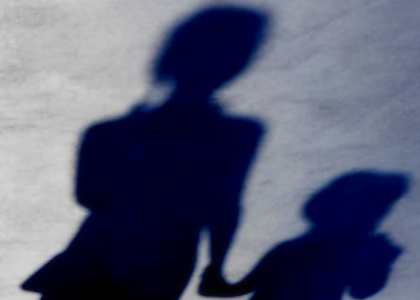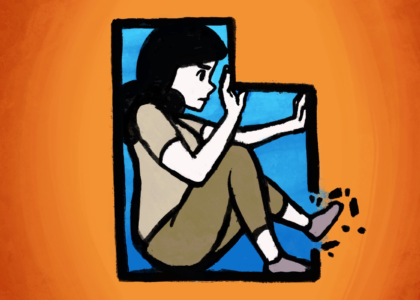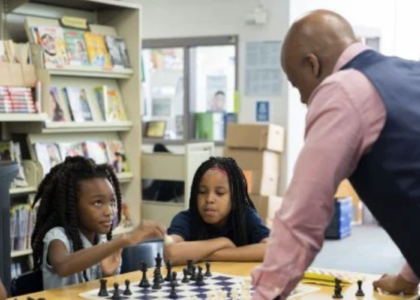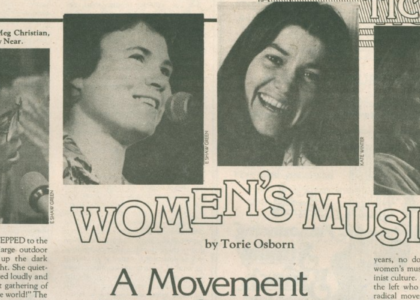“Be bold in your thinking, interpret the stories that have been handed down to you…”
While many of our listeners are no doubt getting ready for Christmas festivities this week, for others the winter celebrations have already begun. Candles are being lit, loved ones are gathered close, and latkes are already sizzling in oil as our Jewish friends, family, and neighbors are celebrating Chanukah, the festival of lights.
From Gerda Lerner and Gloria Steinem to Betty Freidan and Naomi Wolf, I have always admired to contributions of Jewish women to feminist thought and yet we haven’t yet had the opportunity to highlight voices from the Jewish community this season. With that in mind, I was so grateful to be put in contact with a fabulous writer, thinker, and rabbi — Hara Person —who generously volunteered to join us this season and share some stories of powerful women in the Jewish holiday tradition.
Our Guest
Rabbi Hara Person

Rabbi Hara Person (she/her) is the Chief Executive of Central Conference of American Rabbis. Previously, she was the CCAR’s Chief Strategy Officer. In that capacity, she oversaw the Communications Department and served as Publisher of CCAR Press, and worked with leadership on overall organizational strategy.
Rabbi Person was ordained in 1998 from HUC-JIR, after graduating summa cum laude and Phi Beta Kappa from Amherst College (1986) and receiving an MA in Fine Arts from New York University/International Center of Photography (1992).
She served as Educator at the Brooklyn Heights Synagogue from 1990-1996, and was the Adjunct Rabbi there from 1998-2019. Since 1998, Rabbi Person has been the High Holy Day Rabbi of Congregation B’nai Olam, Fire Island Pines, NY.
Before coming to the CCAR, Rabbi Person was the Editor-in-Chief of URJ Books and Music, where she was responsible for the revision of The Torah: A Modern Commentary (2005) and the publication of many significant projects, including the Aleph Isn’t Tough adult Hebrew series and Mitkadem: Hebrew for Youth as well as several award-winning children’s books. While at URJ, she was also the Managing Editor of The Torah: A Women’s Commentary, named the National Jewish Book Award Book of the Year in 2008.
Rabbi Person is also the co-author of Stories of Heaven and Earth: Bible Heroes in Contemporary Children’s Literature and as well as co-editor of That You May Live Long: Caring for Your Aging Parents, Caring for Yourself, and Editor of The Mitzvah of Healing. Her essays and poems have been published in various anthologies and journals, including Bridges: A Jewish Feminist Journal, upstreet, Encyclopedia of Jewish American Popular Culture, Women and Judaism, The Continuum Encyclopedia of Children’s Literature, and The Women’s Haftarah Commentary.
Rabbi Person lives in Brooklyn, NY, and is the mother of two adults.
The Essay
It’s getting to be that holiday season, and I’m here to talk today about the holiday of Chanukah. Specifically, we’re going to talk about the connection between the traditional Chanukah story and women. My name is Rabbi Hara Person. I’m the Chief Executive of the Central Conference of American Rabbis, which is the professional organization of Reform rabbis. I’m also the first woman to serve in this role, so I wind up thinking a lot about women and patriarchy.
In the United States, Chanukah is often thought about as the Jewish equivalent of Christmas because they come, more or less, at the same time of year. But while Christmas is the central Christian holiday and has deep theological underpinnings, Chanukah is actually a minor Jewish holiday that came late into the Jewish holiday cycle. Don’t worry, we’ll get back to that later. But for now, suffice it to say that while Chanukah has really gained importance in America because of its proximity to Christmas, and while it a fun holiday to celebrate, it’s really not one of the big ones for Jews.
First a word about Jewish holidays generally. Most of our holidays are rooted in the Torah. Torah is the Five Books of Moses: Genesis, Exodus, Leviticus, Numbers, and Deuteronomy. The Torah is the core Jewish text, and forms one of the three-part collection known, depending on your perspective, as the Tanach in Hebrew, or perhaps the Hebrew Bible, or if you are someone whose beliefs are connected to the New Testament, you might call it the Old Testament. As a side note, Old Testament is not a term that Jews use. The Tanach, or Hebrew Bible, contains not only the Torah but also the collection of texts known as the Writings, and the Prophets. Now, back to the holidays. Torah mentions three major holidays, known as the three pilgrimage festivals. These are Passover, Shavuot, and Sukkot. Also mentioned is Rosh HaShanah and Yom Kippur. Purim, which is a later development, is mentioned in the Book of Esther. And Chanukah, as we’ll get to later, is a post-biblical holiday which shows up in the Books of Maccabees, which are not part of the Hebrew Bible at all.
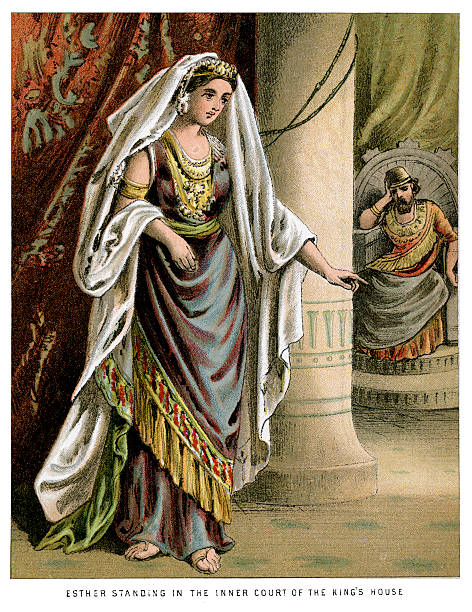
When we think about women and Jewish holidays, what first comes to mind are the holidays in which women play a central and critical role. Purim comes to mind immediately. This is the holiday about, among other things, hatred and cruelty against the Jews. There is Esther, a Jewish orphan girl who marries the king and heroically manages to save her people, her cousin or uncle (it’s not clear exactly which) who has raised her and challenges her to take action, the egotistical bad guy Haman who is set on destroying the Jews, and King Achauerus, who eventually sides with Esther against Haman. This story is full of sex and violence, and by the way features another woman, the original queen Vashti who refuses to strip before the King’s drunk friends and is banished, therefore clearing the stage for the entrance of Esther, who is seemingly all the things that Vashti isn’t, including submissive. There are many fascinating aspects to the story, not the least of which is that a woman, Esther, is a main character, and in fact the text that relates the story of Purim is actually called the Book of Esther – one of the few books named after a woman.
The other holiday in which women play a central role is Shavuot, which features Ruth and Naomi, and is recounted in the Book of Ruth, another one of the few books named after a woman. Shavuot is one of the three pilgrimage festival in the Torah and it has many different strands of themes and meaning. One of those is that it commemorates the giving of Torah at Sinai. But it is also a story of love and caring between women, the mother-in-law Naomi who has lost her two sons, and her daughters-in-law Orpah and Ruth. Ruth emerges as the real central character of the story, hence the name of the book, a Moabite who chooses to not only follow her mother-in-law Naomi but to worship Naomi’s God as well, and to marry the right man, creating a future for both herself and Naomi. In doing so, she gives birth to a son who will become a link in the messianic chain leading to David.
Purim is celebrated in later winter or early spring, and it is a joyous holiday filled with merriment to celebrate the victory of good over evil and of Esther over Haman. Great quantities of alcohol are drunk and special pastries are eaten, people wear costumes, there are often plays depicting the story of Purim as well as raucous readings of the biblical Purim story, and many communities host carnivals for children. Dressing up like Queen Esther has been a rite of passage for many little girls, but today it is not uncommon to also see some proudly defiant Queen Vashtis as well.
Shavuot is a late spring holiday. There is a tradition of reading certain selections from Torah, and of staying up all night to study in groups. Dairy foods like cheesecake and cheese blintzes are connected to Shavuot as well.
So Purim and Shavuot, featuring Esther and Ruth respectively, really stand out as Jewish holidays connected to women. Passover, on the other hand, is a curious one. This holiday, celebrating the miraculous release of the Israelites from slavery in Egypt, is another major Toraitic holiday. While so much of the biblical Exodus story centers around Moses as the hero, and only secondarily around his siblings Aaron and Miriam, the traditional haggadah really makes a point to downplay the role of all human action in the narrative and focuses primarily on God. That said, in recent years Miriam’s role in the exodus story has been pushed to the forefront, and she has been given a place of honor at the Passover seder table, with the development of the new ritual of Miriam’s Cup featured on the seder table alongside Elijah’s Cup. Jewish tradition teaches that not only was Miriam a prophet in her own right, but that she supplied the people with water as they journeyed through the desert. One of the elements of a Passover seder, the ritualized Passover meal, is a cup of wine that is symbolically left out for the Prophet Elijah to sip from as he makes it from house to house throughout the night. Many a parent has surreptitiously sipped from Elijah’s Cup in order to make children believe that the Prophet had really appeared. In trying to center Miriam within the observance of Passover, many households now set out an additional cup, this one filled with water, commemorating Miriam’s role in the Exodus from Egypt.
But even with all of this, while some holidays feature women prominently, overall the main roles are played by men. I mean, we shouldn’t be surprised by that, since most of the main protagonists throughout the bible are men, just as they are in history and myths in general. But here’s the interesting thing about so much of the biblical narrative – yes, many of the main stories are about men, and their brave and heroic actions. But, the people in so many of those stories who actually move the narrative forward, albeit often behind the scenes, off-stage, and generally through subterfuge, are women.
Seriously, think about it. Take the story of Isaac and Rebecca in Genesis. We have a story here of twin brothers, Jacob and Esau, only one of whom can inherit the birthright, and a blind father, Isaac, who is apparently easily tricked. And indeed it is Rebecca who receives prophecy while pregnant that it is to be Esau, the older, who serves Jacob, the younger. Who actually gets the narrative where it needs to go? God makes promises, but how are those promises going to get fulfilled? Not by Isaac, and not even by Jacob until his mother tells him what to do. Rebecca sets the scene, she puts everything in motion, and she does what she believes needs to happen – she instructs Jacob to cover himself in animal skins so that his father believes he is the right brother and will give him his blessing. Jacob tricks his father, gets the birthright and God’s prophecy can now unfold as promised. For her actions, Rebecca is called manipulative by many classical commentators, a trait that some attribute as natural to women of course, given the patriarchal nature of rabbinic tradition, but at the end of the day she is mostly praised for making the ends justify the means and getting the job done.
Dressing up like Queen Esther has been a rite of passage for many little girls, but today it is not uncommon to also see some proudly defiant Queen Vashtis as well.
So many biblical stories contain a complicated mixture of authority and power. Authority, the official way to make change and get things done, is not the same thing as power. Someone can have a great deal of power without having the officially sanctioned authority to wield their power. In patriarchal societies, it is the men who have authority; they own the right to act and rule and command. But it is often women, who lack authority but still may have power, who get things done. And lacking authority, women find power where they can. Often this means using whatever tools they have at hand, repurposing items from the domestic realm, and often having no other choice but to act in ways that are seen as underhanded or deceptive, though successful.
Interestingly, because they are not the main players on the stage of the narrative and are not as visible, they often have more ability than the men to bend rules and use the mistaken assumptions of others, all to the advantage of the narrative. That is exactly what Rebecca does with Isaac, Jacob, and Esau, using household items like animal skins and food to trick Isaac into mistaking one son for the other. This is also reminiscent of what Tamar does in Genesis 38 when the deck is stacked against her. Twice widowed by a pair of brothers in a society that does not have room for single, childless women, Tamar is promised to the third son once he comes of age. When she learns that that son, now of age, is being withheld from her, and that she will be left childless and without a family structure to protect her into old age, she disguises herself and seduces her father-in-law, becoming pregnant with twins. When accused of being a prostitute, she shows up her father-in-law and secures her place in society. Not only does Tamar use disguises and male assumptions about female sexuality to get what she believes is her due, she also serves the meta purpose of the narrative by managing to get pregnant with twins, one of whom will become a link in the chain that leads to King David.
So the question at hand is, what does any of this have to do with Chanukah? Of all the holidays, this one seems the most lacking in women characters and roles for women. And it’s true that on its macho surface, the story of Chanukah focuses solely on men. There’s Judah Maccabee, the brave, rebellious fighter from a priestly family who goes up against the Greeks. And there’s his many brothers, and his father Mattathias.
Chanukah is probably one of the best known Jewish holidays today in North America, but as I mentioned earlier, it’s actually a minor holiday in the Jewish holiday cycle. It’s a post-Biblical holiday, meaning that it’s not even mentioned in the Hebrew Bible. It enters the Jewish annual cycle at a later point in history. Unlike, let’s say, Passover, which is mentioned many times in the Torah, the recounting of Chanukah comes from the book of Maccabees I and II. These books are not within the Jewish Biblical canon and are not part of Jewish sacred text. Rather, they make up part of what came to be known as the Apocryphal writings, but do have historical significance in Jewish tradition.
In patriarchal societies, it is the men who have authority; they own the right to act and rule and command. But it is often women, who lack authority but still may have power, who get things done.
Chanukah is, at its core, a militaristic holiday that celebrates the victory of the Jewish anti-assimilationist band of resistance fighters, the Hasmoneans or as they’re popularly known, the Maccabees, against the Greco-Syrian ruler Antiochus. In 168 BCE, the Greco-Syrians take over the holy Temple in Jerusalem and desecrate it by making it into a shrine for Zeus. In addition, they attempt to seize control over the local population, outlawing practices like the observance of Shabbat, circumcision, and other religious practices. Many Jews began to follow the Hellenistic customs, but some refused to let go of their Jewish practices. This resulted not only in a rebellion against the ruling force, but also a Jew-against-Jew battle in which those who sought to blend in were under attack by those who believed in adhering strictly to traditional observance.
To make a long story short, the resistance fighters go up against the much larger army of Greco-Syrians and miraculously win, re-taking the Temple and rededicating it to the Israelite God. One reason Chanukah lasts eight days is because, with the Temple no longer in Jewish hands, the Jews had not been able to properly celebrate the eight-day harvest festival of Sukkot several months earlier. And so once the Temple was cleaned and rededicated, they held an eight day festival to make up for it.
What about the miracle of the oil, you might be asking? Right. That’s the story of Chanukah which is much more familiar, not that of a bloody battle. The oil, perhaps surprisingly, only came later on, when the rabbis began to wrestle with the story of Chanukah. Not too comfortable with a holiday based on military might, and definitely uncomfortable with a story of a division within the Jewish community itself which essentially created a Jewish civil war in addition to the war against the Greco-Syrians, they created the miracle of the oil that lasted eight days and put God rather than human might at the center of the story. Their reshaping of the story and their emphasis on God’s strength and communal cohesion makes sense for a powerless people. Even more so, the idea of right over might made sense for a diasporic people, reemphasizing the theme of standing up for what one believed in the face of oppression and not giving in to the surrounding majority culture. Not only that, but they were writing at a time when they would have been familiar with the brutal fates of those Jews who had continued to rebel against Roman rule. In centering the spiritual aspect of Chanukah by way of the miracle of the oil and the increase of light in dark times rather than guerilla warfare, they were basically attempting to safeguard the community.
But what about women? So, here’s where it gets interesting.
Jewish tradition is nothing if not the layering of story upon story, interpretation upon interpretation. The embroidering of the story of Chanukah continued beyond the Books of the Maccabees, and beyond the miracle of the oil, with additional strata of meaning continuing to be added on top of the original story. And here’s another place where we see the struggle of authority versus power play out.
The rabbis declared that women, who are typically excused from most time-bound mitzvot, are obligated to light the Chanukah candles. Why? Because they too were included in the miracle, our texts respond. But what does that mean? Did they fight the Greco-Syrians alongside Judah and the Maccabees? Well, probably not, but according to legend they were fighters of a different sort. Similar to how women are obligated to hear the reading of the Purim megillah because they too were included in the miracle of Purim by way of Esther’s heroism, here the rabbinic sources identify two different women, Judith and Hannah, as having had a hand in saving the Jews.

The story of Judith is told in another Apocryphal book, the Book of Judith. In this book, Judith is a wealthy and beautiful widow who seduces the Greek king. She plies him with homemade cheeses, which naturally make him thirsty. (Think highly salted semi-soft cheese like feta cheese). He drinks a lot of an alcoholic drink to satisfy his great thirst, and becomes inebriated. In a drunken stupor, he falls asleep, and Judith cleverly takes his sword and beheads him. She brings his head to Jerusalem, where it is paraded around for all to see. Terrified, his soldiers flee. Now, this story on its face has nothing to do with Chanukah—the holiday is not mentioned in the story itself. But over time the two stories get conflated, and Judith becomes a behind-the-scenes heroine of the Chanukah story, so much so that eating dairy products on Chanukah is mentioned in the Shulchan Aruch, a 16th century Jewish law code. Fun fact: When I lived in Israel, many years ago, I was introduced to the tradition of cheese latkes for Chanukah. (They’re delicious by the way). Growing up in the States, I was only familiar with potato latkes. At the time, I assumed that cheese latkes were a later variant on the original potato latke. But in fact Jewish food historian Gil Marks noted that cheese latkes actually go farther back in Jewish history than potato latkes. This tradition which clearly connects to the story of Judith has now become part of my family tradition—and they are so, so good.
But back to Judith. Perhaps it is the connection between the names Judith and Judah that help the conflation of the two stories—they are the female and male versions of the same name. So by bringing the two stories together, Judith essentially becomes the female version of Judah Maccabee, a different kind of guerilla fighter. Like so many of the women in the Bible, she uses whatever tools she has at her disposal. As a woman, she is not part of the official team of fighters and lacks their weaponry. But she finds a way, outside of the official channels of authority, to wield whatever power she can. Her tools here are traditionally feminine—she uses her beauty and sexuality, and she uses the domestic implements of food and comfort. Like the story of Yael from the Book of Judges, in which Yael seduces Sisera into thinking he is safe with her, and then gives him milk as a soporific so that he relaxes and falls asleep, whereupon she kills him with a tent peg, Judith lures the Greek king into a trap where he lets down his guard. Think again also of Esther in the Purim story, who strategically uses the tools at her disposal, again namely her beauty and sexuality, to save her people at Haman’s expense. Like so many men throughout history, the Greek king has underestimated a woman and pays for it dearly.
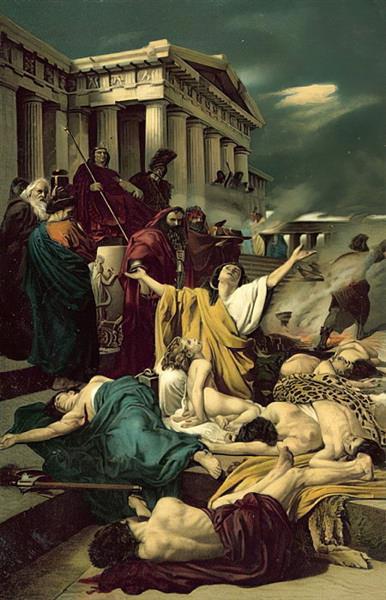
The second woman associated with Chanukah is Hannah. There are two different stories of Hannah that are connected to Chanukah. In one story, also found in the Apocryphal writings, Hannah’s sons are forced to eat pork by Antiochus, the villain of Judah Maccabee’s story, the eating of pork being forbidden in the Torah and against Jewish law. One by one they refuse to renounce their Jewish practice, and are killed. Hannah watches each of her beloved sons die, and when it is her youngest son’s turn, she is told to encourage him to eat the pork and save his life. True to her faith, she instead tells him to be a martyr and refuse the pork. He is killed, and then she dies of grief. It is a terrible story, but served as a kind of morality tale in which Hannah’s commitment to remain true to Judaism became a model for later generations facing similar kinds of horrific choices between renouncing core Jewish beliefs or risking losing their lives.
However, there is another story which surfaces in later texts. There, a woman who in some versions is called Hannah plays a very different role, and is most likely meant to be understood as a completely different person than the Hannah in the story above. This second Hannah is said to be the sister of the Maccabee brothers. When this Hannah is to be married, she rebels against the practice of bride-rape thought to be perpetrated by the Greco-Syrians, by which they would take the virginity of to-be brides as their right as conquerors. In front of all the guests, she strips at her wedding, thereby denying the ruler his unique experience of exposing her nudity for his own private enjoyment. Her brothers are shocked by her immodest actions and pledge to kill her (think of modern day honor killings), but she challenges them instead to fight against the ruling power in order to save the honor all the Jewish women. According to this story, it was her challenge to her brothers that motivates them to begin the Hasmonean revolt, ultimately resulting in victory for the Jews. Again, we see a woman with no authority use whatever power she can garner, in this case once again her sexuality, to get the job done, even at great risk to her own life.
Hannah’s story happens against a backdrop of great concern about the rape of Jewish women by the Greek rulers, which supposedly resulted in many people refraining from marriage altogether. That detail as well as others are interesting echoes to another midrash, in which Miriam is lauded for getting the Israelites to rebel against Pharaoh’s decree to kill all the first born Israelite sons. Armed with a mirror, yet another domestic item turned weapon, she encourages the community to stop their self-imposed vows of celibacy, which they had instituted so that no new babies would be born. Using Miriam’s mirrors to adorn and beautify themselves, the people were reminded of their attraction to each other, and new babies were again created. From that creative and courageous act by Miriam, Moses himself is born and eventually leads the people out of slavery.
Should women have to resort to using domestic items like cheese, or their sexuality, in order to have an impact on the narrative? Of course not. But for these women in antiquity, they had no other real options to be agents of change. And that’s the amazing thing about these stories—that despite the constraints of an old patriarchal society, there were women who emerged in our texts and in our legends, however painfully, as leaders and changemakers. Judith is seen as taking matters into her own hands and turning the tide in a way that made a positive difference to her people. Hannah finds a way to motivate the men and inspires them to take action which led to victory.
There is one more thing to say about these stories. It is highly unlikely they were intended to be stories of women’s empowerment, or to encourage girls to take charge. While we can read the stories in a positive light today, the historical reality is less positive and we should take note of that. These stories of Judith and Hannah come out of the rabbinic imagination and reflect their both their daydreams and nightmares. In these stories, created most likely by men, we see a concern with sexual violence, surely a reflection of the vulnerability that Jewish men felt in regard to what was perpetrated against their wives and daughters. The potential desecration of “their” women was an affront to the men, and a reminder of their powerlessness.
…despite the constraints of an old patriarchal society, there were women who emerged in our texts and in our legends, however painfully, as leaders and changemakers
We can’t ignore the fact that women’s sexuality was owned by men—first by her father and her brothers, and then by her husband. Hannah’s act of public nudity and thereby immodesty shamed her brothers. As with honor killings that still go on today, that choice could have caused her death. The creators of that story allowed her to take a great risk, because just like with the biblical Rebecca or Tamar, the ends justify the means, and they needed a way to address the community’s anxiety over sexual violence by outside conquerors. Nevertheless, from a contemporary perspective, we can still rejoice that our tradition created several bold female characters associated with Chanukah whose actions saved the day.
We have the power to reframe the ancient stories, and even rewrite them. The history of the Jewish interpretative tradition, which values reading between the lines and creating connections that do not appear in the actual core texts, gives us the ability continue to write midrashim today, and to continue to interpret and reinterpret the texts that have been handed down to us. We do not have accept patriarchal readings as canon—we can create our own readings of the texts and its characters. We can see the limitations that biblical society placed on women and value what they were still able to do to, just as we can laud the actions taken by our own ancestors within the often limited scope of their power.
As you celebrate Chanukah, if you celebrate Chanukah, think about the themes that emerge from stories of the women associated with the holiday. As you light your Chanukah candles, or spin your dreidel, or eat your potato or cheese latkes, think about the struggles that women went through to get you where you are today. Who had to fight what battle? Who had to make hard decisions about Jewish practice, about fitting in or staying true to her values? What are your battles, and what tools do you have to fight those battles? What decisions do you have to make about how you live your life, and what values are those decisions based on? What limitations to your power or authority do you accept, and where can you fight back? How can you use your power or authority for good? How is the patriarchy holding you back, and how are you pushing back on the patriarchy? Be bold in your thinking, interpret the stories that have been handed down to you, and be a Chanukah rebel.
Happy Chanukah!
She is not part of the official team…

But she finds a way
Listen to the Episode
&
Share your Comments with us below!


